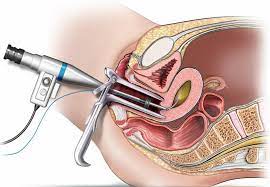Laparoscopic Hysterectomy
Canada
-
Our Price USD 5526
-
Hospital Price USD 5817
-
You Save : USD 291
Booking Amount: USD 553. Pay Remaining 90% at the hospital.
Book NowAdditional Credit
Among the important extras we offer as part of the Additional Credit are the following:
-
Site Tourism For The Patient & Attendant
-
Airport Pick & Drop Service
-
Ambulance service at airport
-
Priority appointments with The Doctor
-
Cancel Easily Anytime with Full Refund
-
Room Upgradation
-
Free Online Doctor Consultation Valued at USD 20
-
Free hotel Stay for 5 to 7 days Accordingly
-
Welcome Kit at Arrival
-
Interpreter
-
Medical Visa Assistance
What is Included?
- Doctor consultation charges
- Lab tests and diagnostic charges
- Room charges inside hospital during the procedure
- Surgeon Fee
- Cost of implant
- Nursing charges
- Hospital surgery suite charges
- Anesthesia charges
- Routine medicines and routine consumables (bandages, dressings etc.)
- Food and Beverages inside hospital stay for patient and one attendant.
What is not Included?
- Extra Radiology Investigations
- Healthcare Professionals Charges of other consultations.
- Other Requested Services such as Laundry etc.
- Additional Pharmaceutical Products and Medicines After Discharge from Hospital.
- Management of Conditions Unrelated to Procedures or Pre-Existing.
- The cost of any additional implants will be in addition to the package cost.
Package Description
Procedure Description:
Laparoscopic Hysterectomy
Laparoscopic hysterectomy is a type of vaginal hysterectomy that uses a thin, flexible tube called a laparoscope that has a video camera inside of it. Small abdominal incisions made in the vicinity of the navel are used to introduce thin tubes. After that, the uterus is removed in parts either by the vagina or the laparoscope tube.
Disease Overview:
Pelvic inflammatory disease
PID can be caused by a variety of bacteria, however the most frequent are gonorrhoea and chlamydia infections. Typically, these microorganisms are obtained through unprotected intercourse.
Pain in your lower abdomen and pelvis, which can range from minor to severe.
Being a sexually active young lady under the age of 25
Having more than one sexual partner
Being in a sexual relationship with someone who has several sexual partners
Having a sexual encounter without using a condom
Douching on a frequent basis might throw off the balance of healthy vs bad bacteria in the vaginal area, masking symptoms.
Having a sexually transmitted illness or a history of pelvic inflammatory disease
After the placement of an intrauterine device, there is a modest increase in the risk of PID (IUD). This danger is usually limited to the first three weeks following implantation.
Disease Diagnosis
There is no one test that can identify pelvic inflammatory disease with certainty. Instead, your doctor will depend on a mix of results from the following sources:
Your medical background. Your doctor would most likely inquire about your sexual activities, sexually transmitted illness history, and birth control technique.
An examination of the pelvis. During the exam, your doctor will look for pain and edoema in your pelvic region. Cotton swabs may also be used by your doctor to collect fluid samples from your vaginal and cervix. The samples will be examined in a laboratory for symptoms of illness as well as organisms like gonorrhoea and chlamydia.
Tests of the blood and urine. These tests can detect pregnancy, HIV, and other sexually transmitted illnesses, as well as evaluate white blood cell counts and other infection or inflammatory indicators.
Ultrasound. Sound waves are used to make pictures of your reproductive organs in this exam.
If your doctor is still unsure about the diagnosis, he or she may suggest more testing, such as:
Laparoscopy. Your doctor will introduce a tiny, illuminated tool via a small incision in your abdomen to observe your pelvic organs during this operation.
Biopsy of the endometrium. Your doctor will put a tiny tube into your uterus to extract a small sample of endometrial tissue during this operation. Signs of infection and inflammation are looked for in the tissue.
Disease Treatment:
The infection that causes pelvic inflammatory disease can be cured with prompt medical therapy. However, any scarring or damage to the reproductive system produced by PID cannot be reversed. The following are the most common treatments for PID:
Antibiotics. Your doctor will prescribe a course of antibiotics that you should begin taking right away. Your doctor may change your medication based on the findings of your blood tests to better match the infection's cause. After three days, you'll probably see your doctor to make sure the medication is working. Even if you start to feel better after a few days, make sure you take all of your prescription.
Your partner's treatment. Your sexual partner or partners should be evaluated and treated to prevent reinfection with a STI. Infected partners may not show any signs at all.
Abstinence for a limited time. Avoid sexual activity until your therapy is finished and your symptoms have gone away.
You may need hospitalization if you're pregnant, extremely unwell, have a suspected abscess, or haven't responded to oral treatments. Antibiotics may be given intravenously, followed by antibiotics taken orally.
Surgery is only required in rare cases. Your doctor may drain an abscess if it ruptures or threatens to rupture. If you don't react to antibiotics or have a doubtful diagnosis, such as when one or more of the signs or symptoms of PID aren't present, you may need surgery.
Information related to Treatment
Package Details
Days in Hospital
1 Days
Days in Hotel
*
7 Days
Room Type
Private


